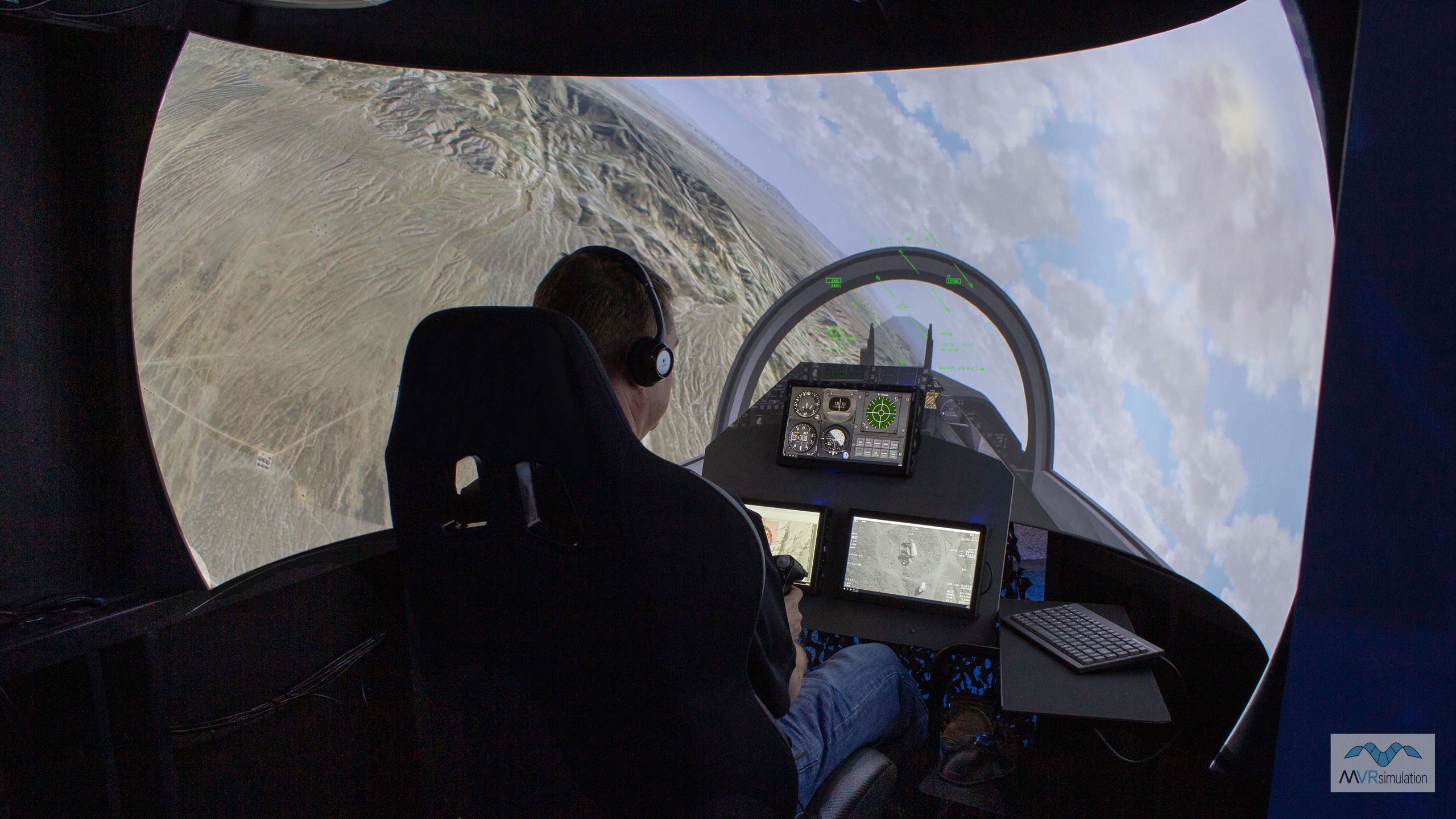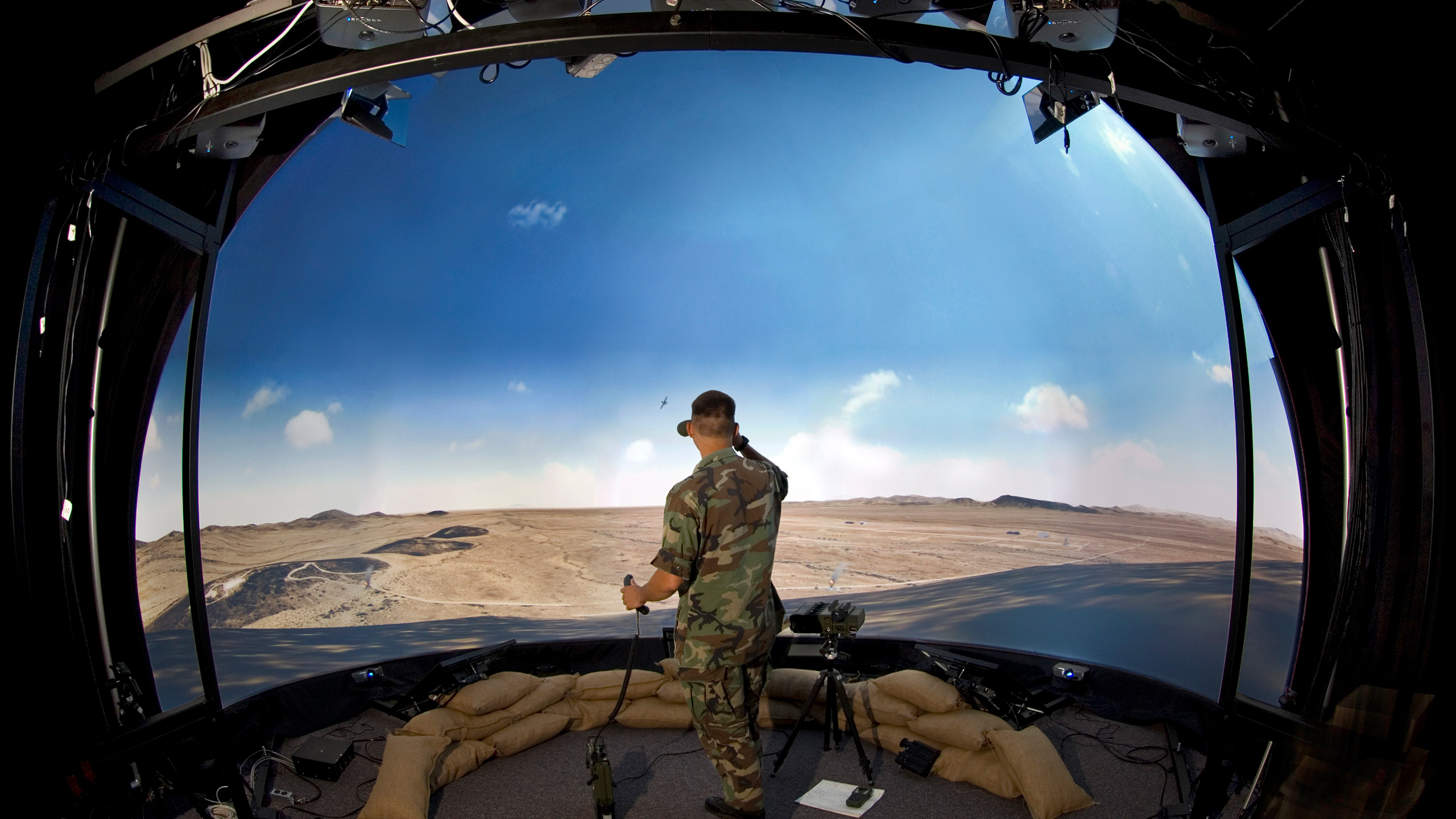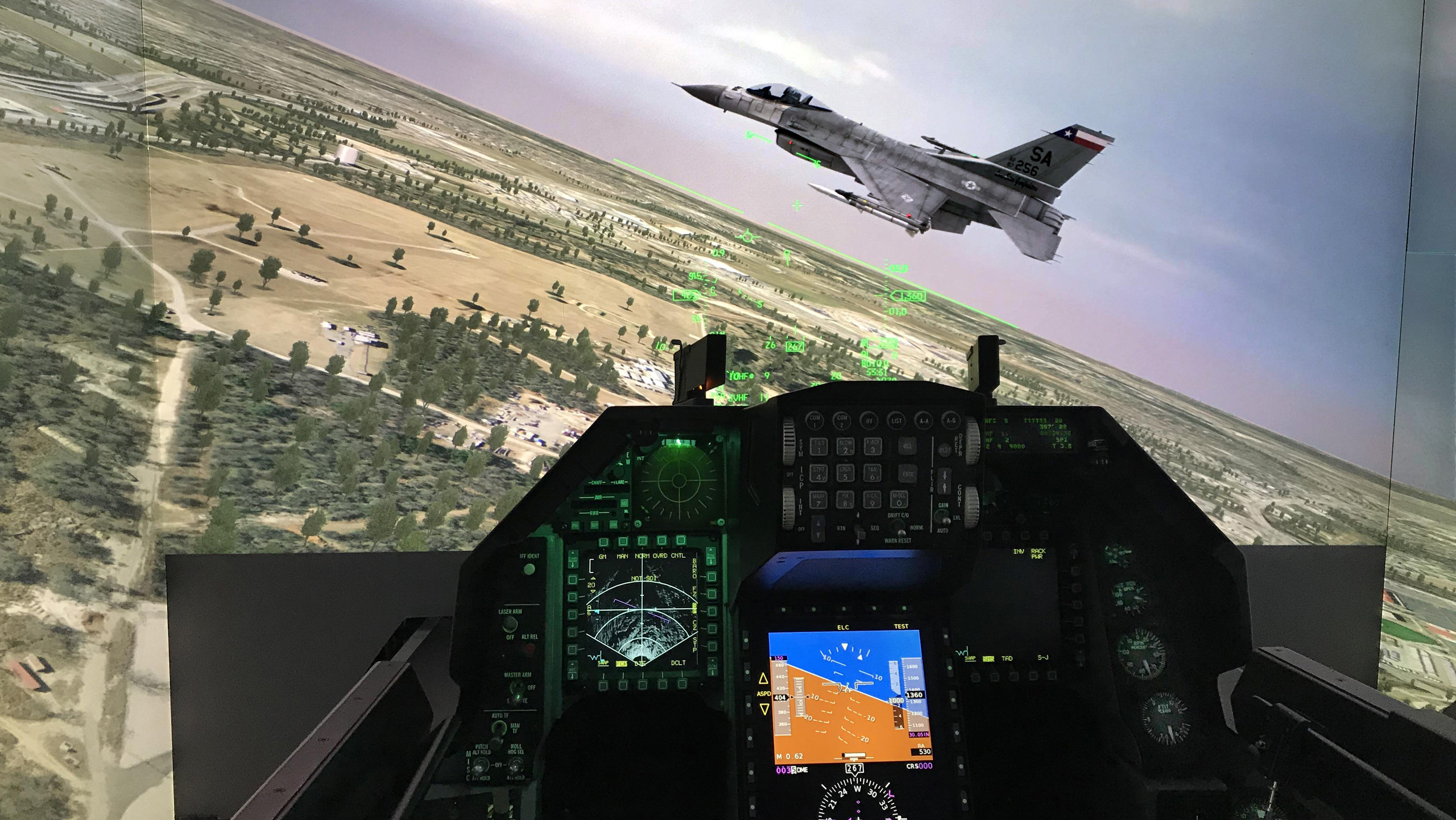Multi-Channel Synchronization



MVRsimulation VRSG support for multiple synchronized channels, VRSG MultiChannel, is a set of VRSG channels (instances or computers) combined in such a way as to create a multi-channel image generator. Training simulators with this kind of setup typically have multiple displays (such as domes, monitors, VR headsets, or emulated military equipment). Each display is driven by a different VRSG channel, and in some cases a simulation host controls all the channels to provide a coordinated multiple display environment.
VRSG's multichannel support is a UDP-based network interface that allows your simulation model to control an unlimited number of VRSG channels. The multi-channel synchronization technology is used in a variety of multi-channel simulators ranging from ground vehicles to helicopters and fast-moving fixed-wing aircraft.
Using Common Image Generator Interface (CIGI), your simulation model provides the current position and orientation of the ownship every frame. The visual channels begin drawing the scene when they receive the current ownship update. This allows "front-end" synchronization, ensuring that each channel begins the next frame at the same time, and remains paced by the host. You configure the client views on the VRSG Dashboard, where the Client Views tab contains the controls that enable you to identify which VRSG clients will be controlled by the master channel and specify the relative locations and orientations of the client views.
VRSG can also be used in a standalone manner in multichannel mode, where a single VRSG instance acts as simulation host, controlling other VRSG channels. This setup is useful if you want to have a "stealth" or after-action-review viewer, that is controlled by a 6DOF input device.
